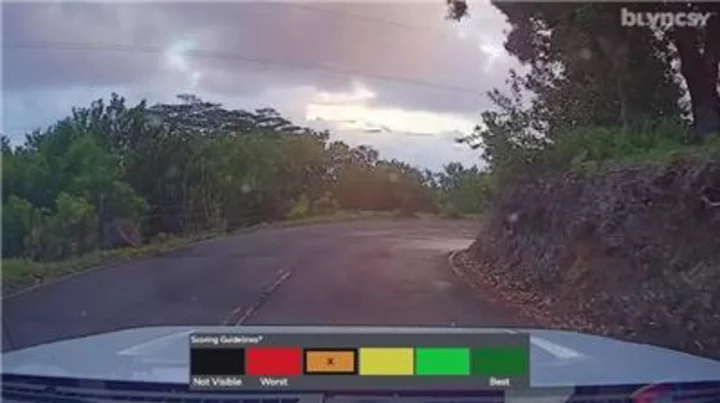
Bentley Systems’ iTwin Ventures Acquires Blyncsy, Breakthrough Innovator in AI Services for Transportation Operations and Maintenance
EXTON, Pa.--(BUSINESS WIRE)--Aug 14, 2023--
2023-08-15 04:16

Zoom shares jump as CEO says company to develop and deploy AI tools
Shares of Zoom jumped in after-hours trading Monday after the company said it expects to rake in stronger-than-expected earnings in the rest of this fiscal year.
2023-08-22 05:48

India's moon lander makes history as first to reach coveted south pole
India's robotic spacecraft landed on the moon unscathed Wednesday, a historic achievement for the country's
2023-08-24 01:19

California Water Reservoirs Are Still Brimming as El Niño Looms
California’s reservoirs are still brimming from last winter’s heavy rains and snow, even as El Niño raises the
2023-10-04 05:55

Fortnite Update v25.20 Adds New Reality Augments: Full List
Fortnite update v25.20 features three new Reality Augments, including Pistol Recycle, Scoped Salvo, and Desperate Reload, to Fortnite WILDS.
2023-07-27 00:28

Xbox Series X Black Friday 2023 Buying Guide: Best Deals, Prices, Bundles
I suggest taking advantage of these Xbox Series X console deals.
2023-11-14 23:16

Army officers say they are taking power in Gabon
Army officers go on TV to say they are annulling the results of the recent presidential election.
2023-08-30 12:46

World Sees Second-Hottest May in 30 Years as Antarctic Ice Reaches New Low
The global temperatures in May were the second-warmest in the past three decades as polar ice continues to
2023-06-07 20:46

How Kim's meeting with Putin at Russian spaceport may hint at his space and weapons ambitions
Ending a global guessing game on when and where they would meet, North Korean leader Kim Jong Un and Russian President Vladimir Putin convened at a rocket launch facility in Siberia
2023-09-13 16:27

Intel says newest laptop chips, software will handle generative AI
By Stephen Nellis and Max A. Cherney Intel said on Tuesday that a new chip due in December
2023-09-19 23:48

Meta sells GIPHY to Shutterstock for a big loss after regulators force a sale
How does one turn $400 million into a cool $50 million in just 3 short
2023-05-23 22:56

Japan eyes tax break for domestic EV battery, chip production - Nikkei
TOKYO Japan plans to create tax breaks for domestically-made electric vehicle (EV) batteries and semiconductors from April 2024
2023-08-11 11:17
You Might Like...

Amazon makes first Big Tech challenge to EU online content rules

Suspected Chinese operatives using AI generated images to spread disinformation among US voters, Microsoft says

Google Calendar Can Now Tell Coworkers the Exact Times You'll Be in the Office

Snap revenue view above estimates on boost from new ad targeting tools

Japan and US to commit to closer chip cooperation in joint statement-source

Microsoft and Sony agree to keep Call of Duty on PlayStation

Nintendo Download: It’s a Small World, After Tall

US wildland firefighter pay threatened by Republican feud in Congress
